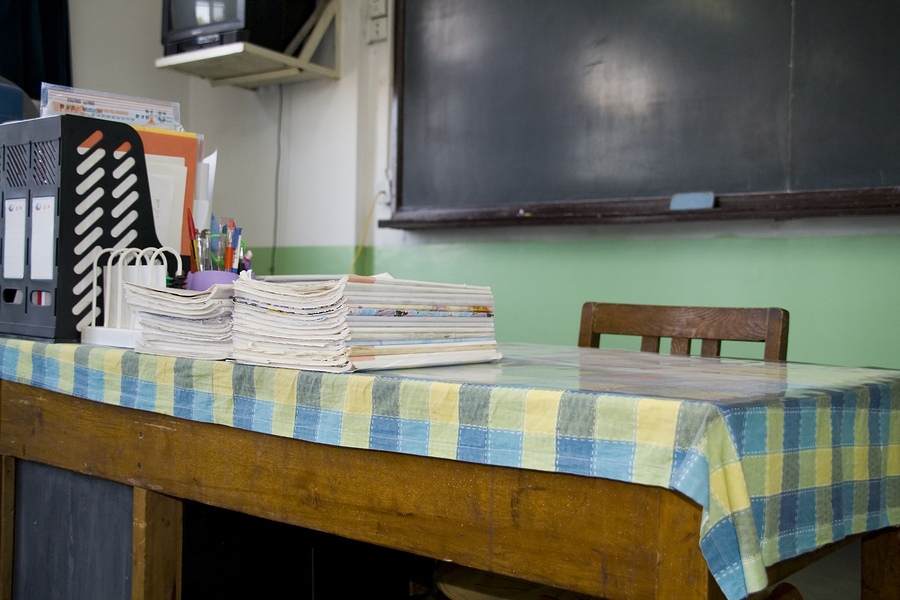Qualified teachers are needed to prepare the new generations, but, what happens when fewer people want to study teaching?
Photo: Bigstock
Being an educator has become less valued by the population, the reasons are in detriment and the facts: it looks little prestigious or low status due to the insufficient preparation of teachers, small room for growth, and to be considered poorly paid; especially when compared to other professions.
According to a book published by the Inter-American Development Bank, which talks about the lack of teacher prestige and how to recover it, many students from countries with high academic performance, such as the Republic of Korea, Finland, and Japan, plan to become educators; sometimes, even surpass those who want to study some engineering. Conversely, in Latin America, there are few young people interested in a teaching career. In Peru, for example, less than 3% of young people are struck by this occupation.
The salary: a great disadvantage
Although being a teacher has certain advantages that other professions lack, such as greater job security, average fewer hours of work and more days off, pay remains a clear obstacle when competing for high school students interested in studying teaching.
This wage gap is especially evident in Latin American countries. In countries like Brazil, Peru, and Chile, the difference is around 49% and 56% less than other professions. The worst cases are Ecuador, with a difference of 77%, and Mexico, with 83% less than other occupations.
On the other hand, in countries such as the Republic of Korea or Singapore, where their educational performance is better than in Latin countries, teachers’ salaries tend to be higher compared to other professions.
However, and in a generalized manner, the income of teachers does not increase much during their career which makes it difficult to recognize, in a remunerative way, their performance, reducing the possibility of converting teaching into a more competitive job.
The problem of infrastructure
In several cases, Latin American schools do not have adequate infrastructure, not only lack good laboratories or are well equipped, but they are also deficient when it comes to offering essential services.
On average, 74% of the schools in 15 Latin American countries evaluated lacked laboratories for science classes, 54%, an exclusive room for teachers, 20%, bathrooms in good condition, and 16% an office for the director.
Something that also aggravates the problem is its location. In Ecuador, 24% of teachers work in rural areas compared to 9% in other professions. These percentages in other countries are; Peru with 12% of teachers and 4% respectively and in Brazil with 10% and 3%. These teachers commented that their schools are in areas far from the city and located in areas where they can be violence.
Apart from the lousy pay, the absence of essential infrastructure discourages young people from studying teaching, because, despite there are incentives to compensate for the distance and risk of working in these places, it does not seem to be enough to attract talent that educates those who they need it most
So, who is studying education?
Another severe problem in teaching is presented at the time of entering the race, since, unlike high-performance countries, such as Singapore or Korea, in Latin America, this is one of the professions with the easiest access. It resulted in a higher number of young people enrolled, not by vocation, but because it is their only available option, the result of low academic performance during the baccalaureate.
The best example of this is Peru, where 69% of applicants to the teaching profession is accepted, compared to 42% of those interested in careers in Humanities.
The simple entry into the Education career also explains the results that students get in the PISA test. Many of these students have lower scores compared to their colleagues in other academic areas. In the case of Peru, applicants to become teachers have an academic performance 12% lower than in other careers, in Colombia, 6%, Mexico, Costa Rica and Brazil 5%. In contrast, educators in Germany score higher than others by 11%.
These statistics again point out the problem with teaching, how to attract the attention of young people and give more prestige to the career of Education, when they are only interested in being teachers with low academic performance?
What happened? Why was the teaching being discredited?
Previously, teachers were a symbol of social prestige. They were known as studied people, with superior knowledge of others. Even in some cases, teachers had such a good reputation that they became figures of authority, as judges or notaries.
So what happened? What led young people to see the profession as a career for the worst performers? Why are wages so low and there is so little personal growth?
Two trends in Latin America helped to bring teaching to its current state; the accelerated growth of student coverage in the mid-twentieth century and the social and cultural changes that the female workforce had.
The ravages of the educational expansion of the 20th century
In the twentieth century, only 1 in 10 inhabitants lived in urban areas, and the educational offer was only offered in the city, so a large part of the population was illiterate. This lack of education led to different governments decided to create programs to provide elementary education, uniform, secular and free, that is, to educate en masse.
The Latin American countries had to immediately incorporate thousands of new teachers to carry out mass education, which led to the creation of initial teacher training programs (FDI).
Since there was so much urgency to create teachers, governments looked for ways to facilitate obtaining the degree; in several cases, teacher training courses were designed by correspondence or very short, which significantly lowered the quality of teachers.
This programs caused an increase in the number of elementary teachers, between 1957 and 1965, from 29% to 36% in Colombia, from 35% to 49% in Ecuador and from 41% to 68% in Mexico. By 1990, the number of teachers became higher than the number of students in Ecuador, Colombia, and Peru.
Added to this, in the 1980s, Latin America suffered an economic crisis, which resulted in lower wages more drastically than many other professions. In Latin America, wages, in general, declined by 4% between 1981 and 1990; the worst case was that of Ecuador where a teacher’s income decreased by 67%.
It was this tendency that brought together two factors that led to teaching to lose its prestige: to lower quality when it comes to training teachers and the collapse of salaries. By wanting to educate the masses without investing in decent initial training, sacrificing quality, and without spending on wages or improving working conditions, including infrastructure, they contributed to the decline of teacher prestige.
To read the article about why the teaching prestige declined, click here.
This article from Observatory of the Institute for the Future of Education may be shared under the terms of the license CC BY-NC-SA 4.0 
)
)











)
Paulette Delgado
Paulette Delgado
Paulette Delgado